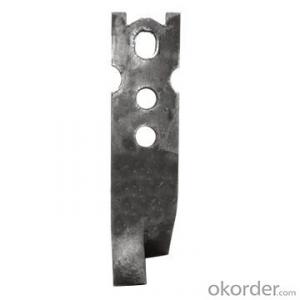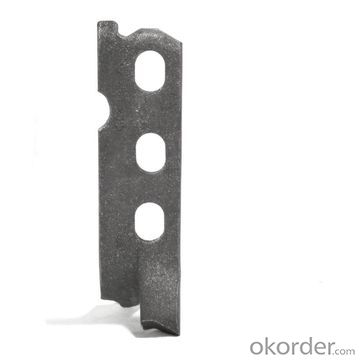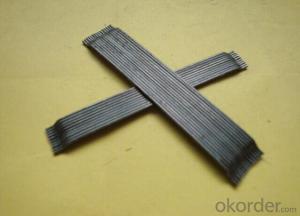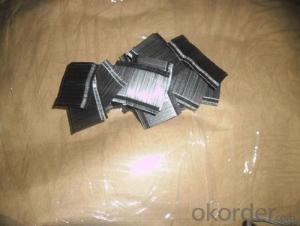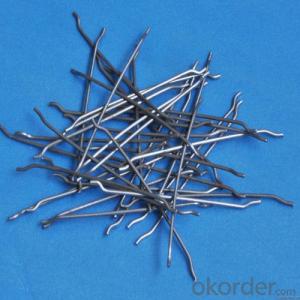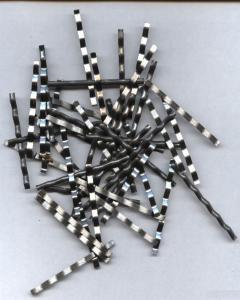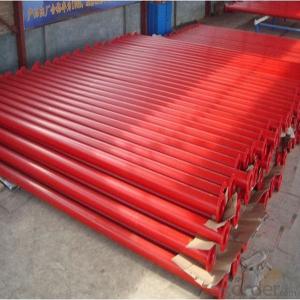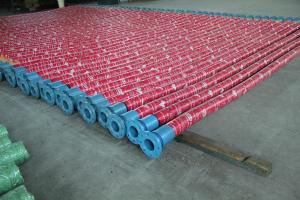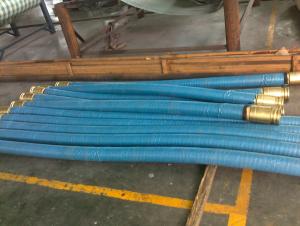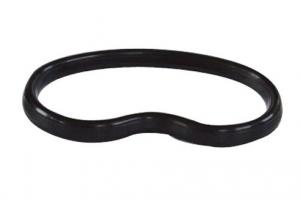Alloy Steel Spread Anchor for Concrete Construction
- Loading Port:
- Tianjin
- Payment Terms:
- TT OR LC
- Min Order Qty:
- 100 pc
- Supply Capability:
- 10000 pc/month
OKorder Service Pledge
OKorder Financial Service
You Might Also Like
Spread anchor for concrete construction
1.Product details:
1) Material: steel
2) Specification: 1.3T, 2.5T (2T), 5.0T (4T), 10.0T (8T)
3) Products available: swift lift lifting eyes are used with the swift lift anchors to lift, handle and place precast concrete elements
2.Primary competitive advantages:
1)We can supply guarantee/warranty
2)On-time delivery time within 25 days after confirming order
3)Products are enhanced by the factory QA and Quality Control checks during the production, if necessary each order can be send out with a certificate referring back to test
4)Precast concrete elements may be lifted several times after casting and during storage and erection-by using this system the designer and the worker manager ensure that each lift is carried out safely and quickly, failure to use a designed and coordinated system could result in material breakage at some point during the production/delivery process
3.Kindly note:
1)All anchors and lifting links must be designed, calculated and installed according to the instruction, details please ask us
2)The system is only suitable for pre-casting, storing and erecting precast elements
3)For long term use, such as counter weights, please consult Halfen
The lifting link must be in a secure position during the lifting operation
4)This literature is guidance for professional engineers/pre-casters, if in doubt, please ask
Market:
Asia
Australasia
Central/South America
Mid East/Africa
North America
Western Europe
FAQ:
Q1: How long about delivery time Concrete transport socket ?
A1: The delivery time will be very short, normally we keep the raw materials for old customers and sometime we also keep stock products to
make sure delivery time in any emergency cases.
Q2: How do we guarantee the quality of our Concrete transport socket ?
A2: We have established an advanced quality management system which conducts strict quality tests at every step, from raw materials to the final product. At the same time, we provide extensive follow-up service assurances as required.
Q3: How soon can we receive the product after purchase?
A3: Within three days of placing an order, we will book the vessel for goods. The specific shipping date is dependent upon international and government factors, but is typically 7 to 30 workdays.
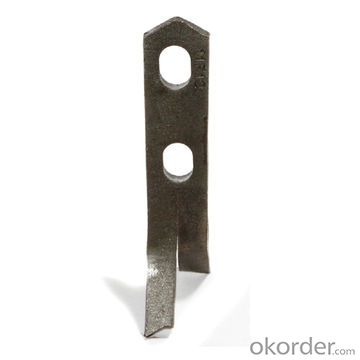
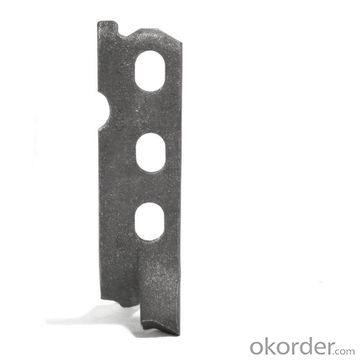
- Q: What is the purpose of a concrete pump agitator motor?
- The purpose of a concrete pump agitator motor is to mix and agitate the concrete mixture inside the pump, ensuring a consistent and homogenous blend. This helps to prevent the concrete from settling or segregating, ensuring a higher quality and more workable mixture for construction purposes.
- Q: Can concrete pump spare parts be painted or coated for increased durability?
- Yes, concrete pump spare parts can be painted or coated for increased durability. Painting or coating the spare parts can help protect them from corrosion, wear, and other forms of damage. By applying a layer of paint or coating, the spare parts can have improved resistance to harsh environmental conditions, chemicals, and moisture. Additionally, certain paints or coatings can offer additional benefits such as heat resistance or non-stick properties, which can further enhance the durability and performance of the spare parts. It is important to use appropriate paints or coatings that are specifically designed for the materials and conditions the spare parts will be exposed to, to ensure optimal adhesion and longevity.
- Q: How can one determine the correct pressure and flow rating for hydraulic components in concrete pump spare parts?
- When determining the correct pressure and flow rating for hydraulic components in concrete pump spare parts, several factors should be taken into account: 1. Review the manufacturer's specifications for the hydraulic components. These specifications should provide the recommended pressure and flow ratings for optimal performance and durability. 2. Assess the concrete pump system's specific requirements. Factors such as pump size, concrete volume and distance, and required delivery speed should be considered. These factors will help determine the necessary pressure and flow rating for the hydraulic components. 3. Ensure that the pressure and flow rating of the hydraulic components fall within the safe operating limits of the concrete pump system. Going beyond these limits can result in equipment failure, accidents, or component damage. 4. Verify the compatibility of the hydraulic components with the rest of the system. The pressure and flow rating should align with the capabilities and specifications of other components like the pump, valves, and hoses to guarantee proper functionality and performance. 5. If unsure about the appropriate pressure and flow rating, seek guidance from hydraulic system experts or the manufacturer's technical support team. They can offer advice based on their expertise and experience with similar systems. It's important to note that the pressure and flow rating of hydraulic components may vary depending on the specific model, design, and intended application. Therefore, referring to the manufacturer's guidelines and recommendations is crucial to accurately determine the correct pressure and flow rating for hydraulic components in concrete pump spare parts.
- Q: How often should hydraulic filters be replaced in a concrete pump?
- Hydraulic filters in a concrete pump should be replaced on a regular basis to ensure optimal performance and longevity of the equipment. The exact frequency of replacement will depend on various factors such as the specific model of the concrete pump, the operating conditions, and the quality of hydraulic fluid used. As a general guideline, it is recommended to replace hydraulic filters in a concrete pump every 500 to 1,000 operating hours or at least once a year, whichever comes first. However, it is essential to refer to the manufacturer's recommendations and guidelines for the specific model of the concrete pump, as they may have specific maintenance schedules and intervals. Regular inspection of the hydraulic filters is also crucial to determine if replacement is necessary sooner than the recommended interval. If the filters are clogged, damaged, or show signs of excessive wear, they should be replaced immediately to prevent any potential damage to the hydraulic system. Additionally, if the concrete pump is operating in harsh or dusty environments, the filters may need to be replaced more frequently to ensure proper filtration and prevent contamination. Overall, proper and timely replacement of hydraulic filters in a concrete pump is essential to maintain the efficiency and reliability of the equipment, prevent potential breakdowns, and extend its service life.
- Q: Can concrete pump spare parts be inspected for dimensional accuracy before installation?
- Yes, concrete pump spare parts can be inspected for dimensional accuracy before installation. Before installing any spare parts, it is important to ensure that they meet the required specifications and dimensions to ensure proper functioning and compatibility with the concrete pump system. Inspection can be done using various methods such as visual inspection, measuring with precision instruments, and comparing the dimensions with the manufacturer's specifications. This process helps to identify any discrepancies or deviations in the dimensions of the spare parts, allowing for adjustments or replacement if necessary. Inspecting spare parts for dimensional accuracy before installation helps to ensure the smooth operation and longevity of the concrete pump system.
- Q: What are the different types of concrete pump hoses?
- There are generally two types of concrete pump hoses: steel-reinforced hoses and fabric-reinforced hoses. Steel-reinforced hoses are stronger and more durable, suitable for high-pressure applications and long-distance pumping. Fabric-reinforced hoses are lightweight and flexible, ideal for smaller projects and shorter pumping distances.
- Q: What are the types of concrete pumps?
- According to the power type is divided into electric concrete pump and diesel power concrete pump
- Q: How often should hopper grate handles be inspected or replaced in a concrete pump?
- Hopper grate handles in a concrete pump should be inspected regularly for any signs of wear and tear or damage. The frequency of inspection and replacement may vary depending on the usage and condition of the equipment. It is recommended to inspect the hopper grate handles at least once a month or after every 500 hours of operation, whichever comes first. During the inspection, ensure that the handles are securely attached to the hopper grate and check for any cracks, bends, or other structural issues. If any damage is detected, it is advisable to replace the handles immediately to prevent any accidents or further damage to the equipment. It is also important to follow the manufacturer's guidelines and recommendations for maintenance and replacement of hopper grate handles. By regularly inspecting and replacing the handles as needed, you can ensure the safe and efficient operation of the concrete pump.
- Q: How does a concrete pump hopper grate prevent clogs?
- Preventing clogs in the concrete pump system is a crucial function of the hopper grate. Acting as a filter, it permits only the necessary aggregate size to pass through, while capturing any excess debris or large particles that could cause blockages. Strategically placed openings or grids in the grate catch these unwanted materials. When pouring the concrete mixture into the hopper, the grate serves as a barrier. It allows only the appropriate material size to pass through, while obstructing any larger or undesirable debris. This ensures a smooth flow of concrete through the pump system, preventing any disruptions or jams during construction. Furthermore, the grate is typically constructed from durable materials like steel or high-density polyethylene. These materials are resistant to damage and wear, allowing the grate to withstand the high-pressure environment and continuous operation without deformation. Regular maintenance and cleaning of the hopper grate are also essential to prevent clogs. By inspecting and removing any accumulated debris or build-up on a regular basis, operators can ensure that the grate remains clear and fully functional, thereby preventing potential clogging issues. In conclusion, the concrete pump hopper grate acts as a filter to prevent clogs, allowing only the necessary aggregate size to pass through while capturing larger particles and debris. Its design and durable material ensure a smooth flow of concrete, minimizing the risk of blockages and maintaining construction efficiency.
- Q: How can a malfunctioning control panel affect the pump's operation?
- A malfunctioning control panel can affect the pump's operation by causing errors in controlling the pump's speed, pressure, or flow rate. It can also lead to inaccurate monitoring of the pump's performance, failure to detect faults or abnormalities, and difficulty in troubleshooting issues. Ultimately, a malfunctioning control panel can compromise the pump's efficiency, reliability, and overall functionality.
Send your message to us
Alloy Steel Spread Anchor for Concrete Construction
- Loading Port:
- Tianjin
- Payment Terms:
- TT OR LC
- Min Order Qty:
- 100 pc
- Supply Capability:
- 10000 pc/month
OKorder Service Pledge
OKorder Financial Service
Similar products
Hot products
Hot Searches
Related keywords
